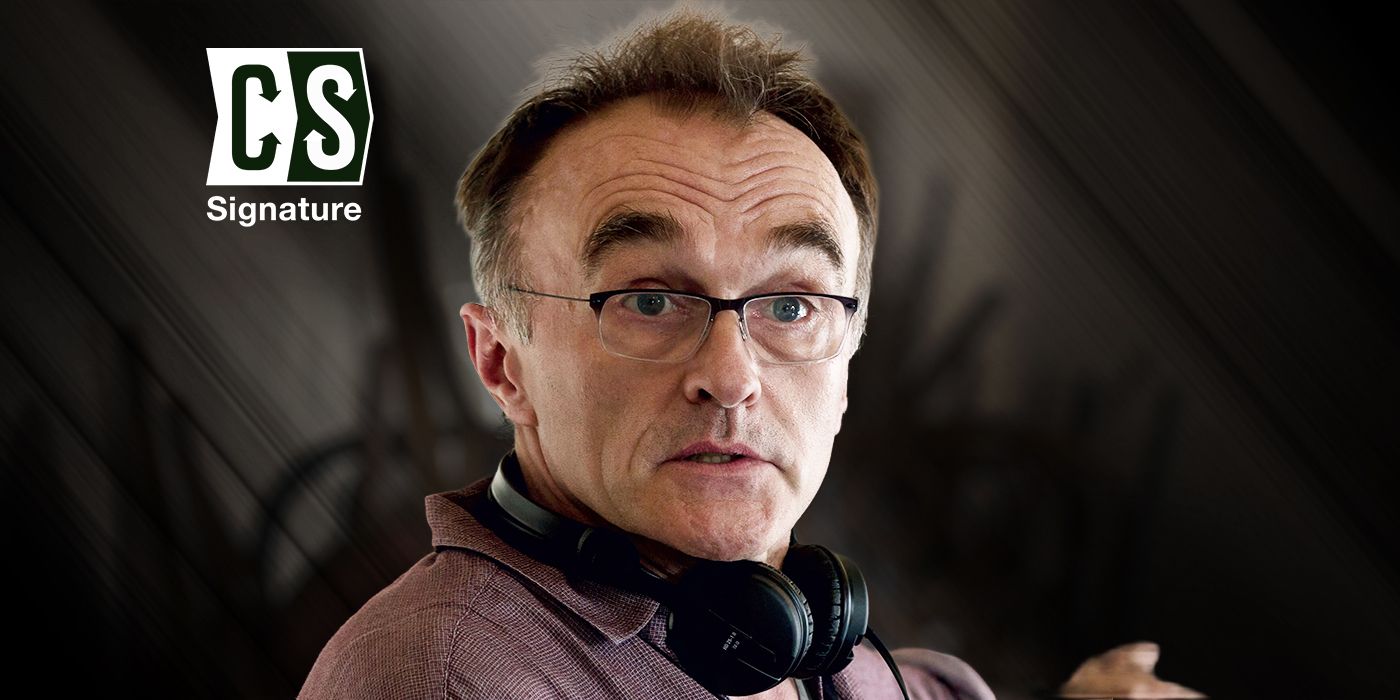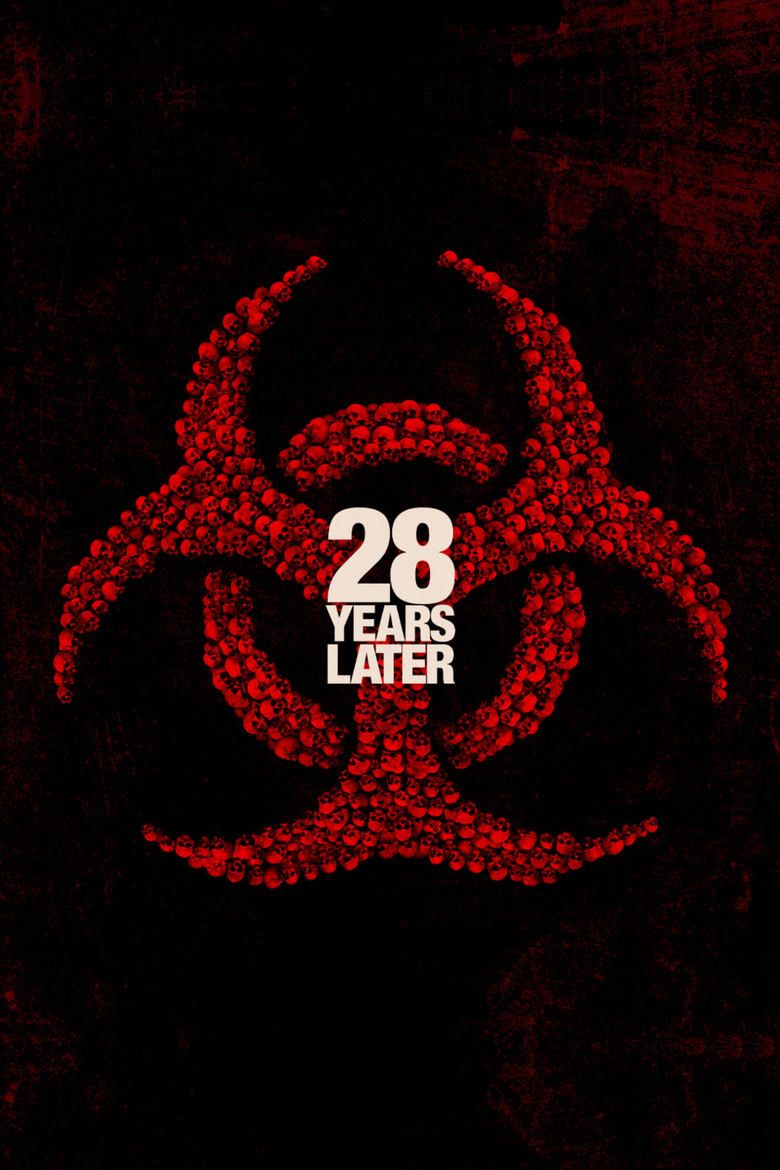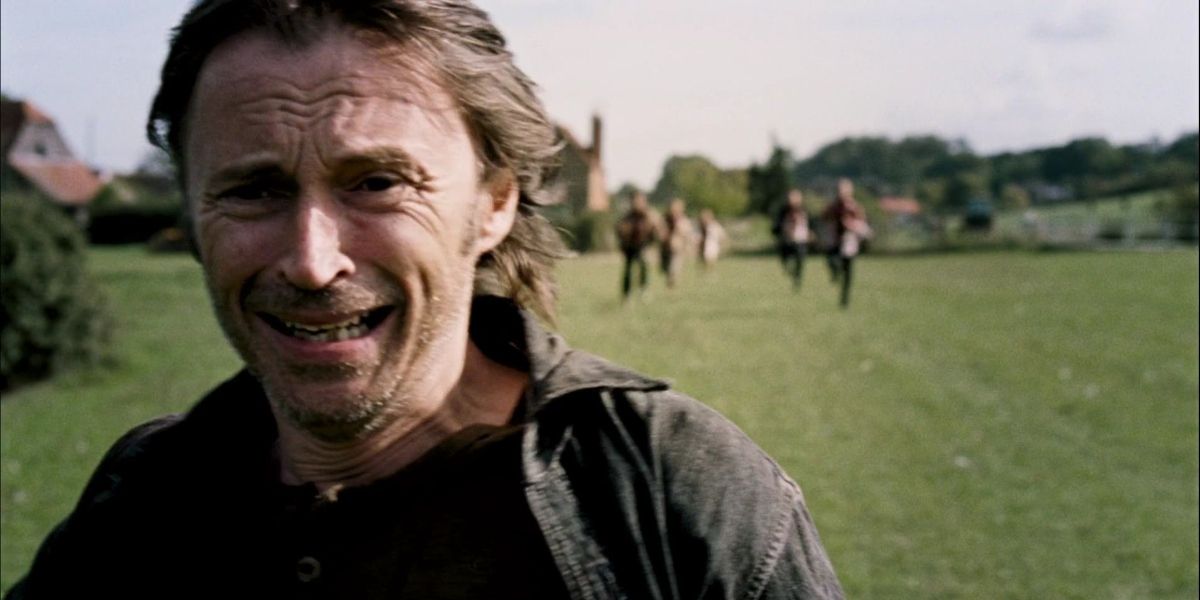Editor’s Note: The following contains spoilers for 28 Years Later.Even those who haven’t seen 28 Days Later have likely seen the bleak imagery of Cillian Murphy wandering around the desolate streets of London. It immediately set the tone of the movie; it was going to be a miserable and hopeless take on the apocalypse, devoid of glossy set pieces and focusing on the emotional impact on humanity. It is often cited as one of the most memorable openings to any movie due to its starkness. It felt impossible that the sequel would ever live up to the high bar set, but 28 Weeks Later presented a heartbreaking first scene in a totally different way, as Robert Carlyle chooses to leave his wife behind to save himself.
With the precedent of cruel, memorable openings set, 28 Years Later had a lot to live up to. Still, its first minutes immediately bring the audience back into the suffocation of the rage virus. It features a lot of the most striking visuals from the trailer, such as a priest being willingly mauled by a group of infected and a room of children being attacked while watching Teletubbies. It manages to distance itself from the styles of openings that came before, while retaining that grim aesthetic and portrayal of the outbreak. It is incredible that each movie in this franchise has continued the trend of having stirring and haunting opening sequences despite their various styles of storytelling.
The Opening of ‘28 Days Later’ is Instantly Recognizable
The purpose of the first scene of a zombie movie is to contextualize the outbreak to the audience. Without feeling too expositional, the first few moments serve to indicate how widespread the infection is and what style of zombies the protagonists are dealing with, while also creating an immediate sense of fear within the audience. Often, these movies start at the emergence of the outbreak and show the vicious, relentless antagonists. However, 28 Days Later is so iconic because it subverts this formula entirely yet still evokes all the same emotions and tells the audience everything they need to know.
Instead of tracking the rise of the infection (although we do get a gnarly scene of the infected monkeys breaking out and wreaking bloody havoc on clueless animal rights activists), 28 Days Later, as the title would suggest, starts nearly a month after the initial outbreak. The usual hysteria of the zombie subgenre is replaced with isolated streets, and the scale of the situation is presented through a large wall of missing posters. There is something so uncomfortable about seeing the center of London, somewhere that should be so busy, completely deserted, making a once iconic setting feel entirely unrecognizable. Using Jim (Murphy) to lead the narrative is an ingenious choice because he has been in a coma and is therefore learning about the outbreak at the same time as the audience. It allows the opening to be realistic in its exploration, with the authenticity resulting in a bleak portrayal that feels tangible.
‘28 Weeks Later’ Presents the Cruel Price of Survival
28 Weeks Later had a difficult task living up to the original iconic opening, as it couldn’t simply replicate it. Instead, it completely shifted the tone and led with an introduction that felt more stereotypical of the zombie subgenre. As a group of survivors huddle together, including Don (Carlyle) and his wife Alice (Catherine McCormack), they are torn as to whether to let a young child into their safe house. Here, the movie immediately shows these characters have a baseline knowledge of the infection and have contingency plans in place to aid their safety. However, one false move leads to them being attacked, and all the preparation falls apart. The immediacy of the stampede is morbid in a way that contrasts with 28 Days Later; rather than showing someone who is accidentally oblivious, it outlines that the relentless nature of the infected can undo resourceful survivors.

Related
The initial attack is terrifying in itself, but the situation only gets more harrowing as Don is left with a choice. Faced with death, he decides not to go back to save his wife in order to ensure his own survival, and he shuts the door on her before fleeing the house. When he turns back, he sees Alice brutally ripped from the window view, and her fate is sealed (until the reveal that she is still alive, of course, but that knowledge is not privy to the viewer at this point). Carlyle shows the distress on his face, but there is a brutal reality to the situation and the acceptance that any attempt to rescue others would’ve led to his own death. It exhibits the unforgiving nature of the rage virus in a completely different way from 28 Days Later, but it is equally brilliant. Followed by a nail-biting chase sequence in which Don is closed in on by several infected, 28 Weeks Later‘s opening scene is undoubtedly the film’s strongest point.
After two standout opening set pieces, 28 Years Later had nowhere to hide, and Danny Boyle certainly delivered in matching the tone of the other movies while creating a unique interpretation of the outbreak. The third movie’s opening takes the franchise to the Scottish Highlands and focuses on the cruel nature of the infection through the eyes of children. The choice to focus on adolescents in the opening serves as thematic foreshadowing for the rest of the movie’s concentration on Spike’s (Alfie Williams) journey. The first shot shows a group of children watching Teletubbies on a vintage TV, with the characters’ high-pitched voices suddenly feeling ominous and eerie.
As the door is shut, the playful melody of the television is accompanied by the sound of screams outside. Yet, as soon as the infected burst through the door, the camera doesn’t show the brutality; it doesn’t need to. Instead, the camera focuses on a splatter of blood on the TV, representing the death of childhood both metaphorically and literally. What follows is one child, who we come to learn is called Jimmy, managing to escape and becoming the focal point of this opening scene, joining Jim and Don in 28 Days Later history. As he moves through the house, attacks are occurring all around him, including his mother, who is viciously killed in the kitchen. There is an urgency to the scene due to the increased scale of the situation; this is not one individual or a small group but an entire community under attack.
Religion Is Central to the Opening of ‘28 Years Later’
Jimmy makes his way to the church to find his father, who is revealed to be the local priest. Immediately, Jimmy goes to hug him, but his father appears to be in a vacant trance, explaining how the infection is salvation for humanity. Although his son gets to safety, the priest doesn’t save himself but opens his arms and ceremoniously accepts his fate. This serves as the second time an opening has ended up in a church, after 28 Days Later, but is the first time the franchise has touched on how religion intersects with the outbreak. The camera intensifies on Jimmy’s face as he can only listen to what is going on above him, and this angle is the defining trait of 28 Years Later’s opening. Everything is told through Jimmy’s perspective, and he is often hiding away behind doors or likely shutting his eyes to block out the truth. It offers a different perspective of the outbreak, and doesn’t rely on visuals as heavily to replicate the sense of panic and fear. Each opening within the series offers a different view of the outbreak, each equally heartbreaking and brutal. It is an extremely impressive trend that not many franchises can say they have consistently achieved.
28 Years Later is in theaters now.

- Release Date
-
June 20, 2025
- Runtime
-
126 minutes
- Director
-
Danny Boyle
- Producers
-
Alex Garland, Andrew Macdonald, Bernard Bellew


